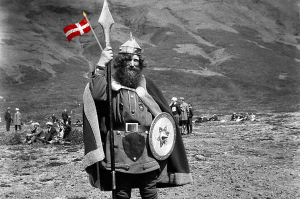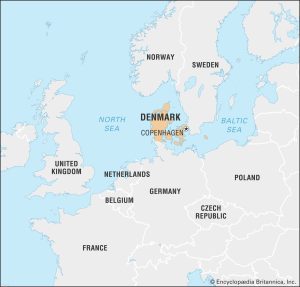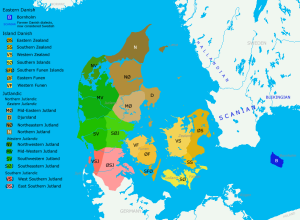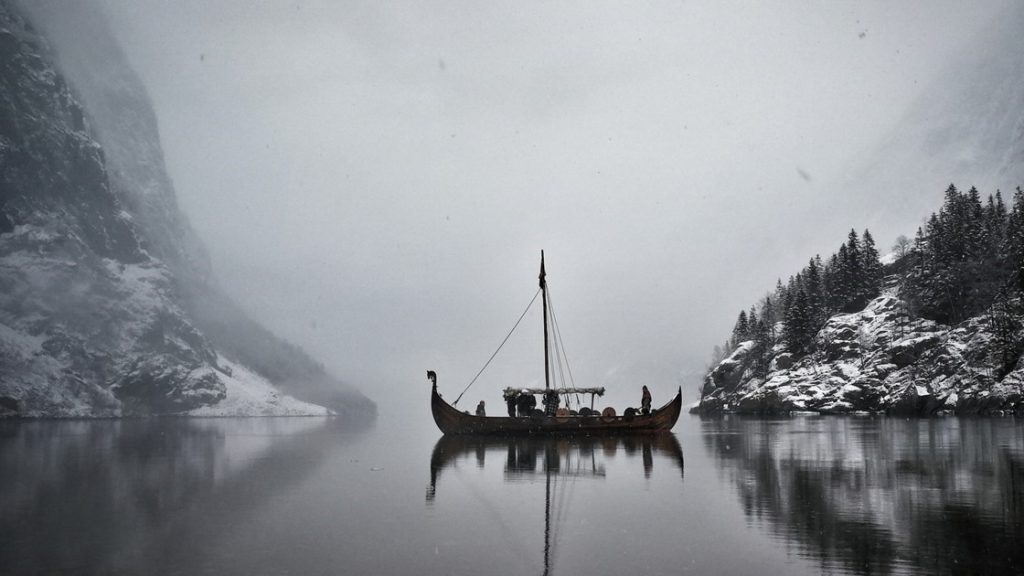History of Denmark
Denmark is a Nordic country located in northern Europe, with a rich history dating back to the Viking Age. The earliest known inhabitants of Denmark were the Mesolithic and Neolithic hunter-gatherers who arrived around 10,000 BC. However, the first significant historical period of Denmark began with the arrival of the Vikings in the 8th century (Lund, 2012).
The Vikings were seafaring warriors who raided and traded with other nations. Denmark, along with Norway and Sweden, was a part of the Viking empire, which extended from North America to the Middle East. The Viking Age lasted from the late 8th century until the late 11th century, and during this time, the Vikings left a lasting impact on Denmark’s culture, language, and economy (Mortensen, 2019).
In the early Middle Ages, Denmark became a Christian nation, and the country’s feudal system was established. The country’s first king, Gorm the Old, ruled from 936 until his death in 958. Gorm’s son, Harald Bluetooth, succeeded him and became known for his unification of Denmark and his conversion of the Danes to Christianity. Harald is also credited with the construction of the Jelling Stones, which are now considered Denmark’s most important historical monument (Jesch, 2016).
In the 12th century, Denmark became a major European power and expanded its territories through a series of conquests. In 1397, Denmark joined with Norway and Sweden to form the Kalmar Union, which lasted until 1523. During the union, Denmark became a dominant player in Northern Europe, controlling territories in Norway, Sweden, Finland, and Iceland (Mortensen, 2019).
Denmark’s colonial history began in the 17th century when it established colonies in India, Africa, and the Caribbean. However, Denmark’s colonial presence was relatively short-lived, and by the early 20th century, it had lost most of its colonies to other European powers (Lund, 2012).
In the 19th century, Denmark underwent significant political and social reforms, including the establishment of a constitutional monarchy and the expansion of voting rights. However, the country also suffered economic hardship, particularly during the Great Depression of the 1930s. During World War II, Denmark was occupied by Germany, but the country managed to maintain a level of autonomy and resistance throughout the occupation (Jesch, 2016).
In the post-World War II era, Denmark experienced a period of rapid economic growth and social welfare expansion, known as the “Danish Miracle.” The country became a pioneer in the welfare state model, with generous social programs and a strong emphasis on equality (Mortensen, 2019).
Today, Denmark is known for its high quality of life, advanced economy, and progressive social policies. The country continues to play an important role in international affairs and has been a member of the European Union since 1973.

Location
Denmark is a country located in Northern Europe, bordered by the North Sea to the west, the Skagerrak and Kattegat straits to the north, and the Baltic Sea to the east (Central Intelligence Agency, 2022). It is situated in the Scandinavian Peninsula, and shares a land border with Germany to the south. The country covers an area of 42,926 square kilometers and has a population of approximately 5.8 million people (World Bank, 2022).
The location of Denmark is a key factor in its history and economy. Its position in Northern Europe has made it a major center for trade and commerce throughout history (Columbia University Press, 2022). Its access to the North Sea and Baltic Sea has allowed it to develop a strong maritime industry, with Copenhagen being a major port city. Additionally, Denmark’s location has made it a strategic location for military purposes. During the Cold War, Denmark was a member of NATO and hosted US military bases (BBC News, 2015).
Denmark’s location also affects its climate. Its coastal location and the influence of the North Atlantic Drift results in a relatively mild and humid climate, with cool summers and mild winters. However, the country can also experience severe winter storms and occasional flooding due to its low-lying terrain (National Geographic, 2022).
In conclusion, Denmark’s location in Northern Europe has played a significant role in its history, economy, and climate. Its coastal position has allowed it to develop a strong maritime industry and become a center for trade and commerce, while its proximity to other countries has made it a strategic location for military purposes. Additionally, its coastal location and the influence of the North Atlantic Drift has resulted in a mild and humid climate.

Climate
Denmark has a temperate oceanic climate characterized by mild winters, cool summers, and frequent precipitation throughout the year. The climate is influenced by the North Atlantic Ocean, the Baltic Sea, and the prevailing westerly winds. According to the Köppen climate classification system, Denmark’s climate is classified as Cfb, which stands for a warm temperate climate with no dry season, and a warmest month below 22°C (71.6°F) (Peel et al., 2007).
The average temperature in Denmark varies according to the season, with temperatures ranging from 0°C (32°F) to 20°C (68°F) throughout the year. The warmest months are July and August, with average temperatures of around 17°C (63°F), while the coldest months are January and February, with average temperatures of around 0°C (32°F) (Danmarks Meteorologiske Institut, 2021).
Precipitation in Denmark is spread out relatively evenly throughout the year, with an average of 600-700 mm (24-28 inches) per year. The precipitation is most common in the western part of Denmark due to the prevailing westerly winds bringing moist air from the North Atlantic Ocean. However, the eastern part of the country receives less precipitation due to the rain shadow effect created by the Scandinavian Mountains (Danmarks Meteorologiske Institut, 2021).
Denmark is also characterized by its frequent weather changes, with the weather being very changeable from day to day. This is due to the influence of the North Atlantic Ocean, which brings in weather fronts that can cause rapid changes in temperature and precipitation. Additionally, Denmark is known for its strong winds, particularly in the winter months, due to the influence of the North Sea and the Baltic Sea (European Environment Agency, 2021).
In summary, Denmark has a temperate oceanic climate with mild winters, cool summers, and frequent precipitation throughout the year. The climate is influenced by the North Atlantic Ocean, the Baltic Sea, and the prevailing westerly winds, with weather changes being common and strong winds being prevalent in the winter months.

Languages
The official language of Denmark is Danish, which is spoken by the majority of the population. Danish is a North Germanic language that belongs to the group of Scandinavian languages. It is closely related to Norwegian and Swedish, and speakers of these languages are often able to understand each other to some extent. Danish is also influenced by the German language, which has had a significant impact on its vocabulary and grammar.
According to statistics from 2020, approximately 5.7 million people speak Danish as their native language in Denmark, while an additional 50,000 people speak Danish as a second language. In addition, Danish is also spoken in Greenland and the Faroe Islands, which are both part of the Kingdom of Denmark. In Greenland, Danish is the official language alongside Greenlandic, while in the Faroe Islands, Danish is the official language alongside Faroese.
Although Danish is the dominant language in Denmark, there are also other minority languages spoken in the country. One of these languages is German, which is spoken by a significant minority of the population, especially in the southern part of the country. Another minority language is English, which is widely spoken and often used as a second language in Denmark. In addition, there are smaller communities of speakers of languages such as Arabic, Turkish, and Somali.
The Danish government is committed to supporting minority languages and has implemented measures to promote their use. For example, the Faroese and Greenlandic languages have been given official status, and there are also programs to support the teaching of minority languages in schools. However, Danish remains the dominant language in Denmark and is the language used in official contexts such as government, education, and the media.
In conclusion, Danish is the official language of Denmark and is spoken by the majority of the population. The language is closely related to Norwegian and Swedish and has been influenced by the German language. While there are also other minority languages spoken in Denmark, such as German, English, and Arabic, Danish remains the dominant language in the country.





